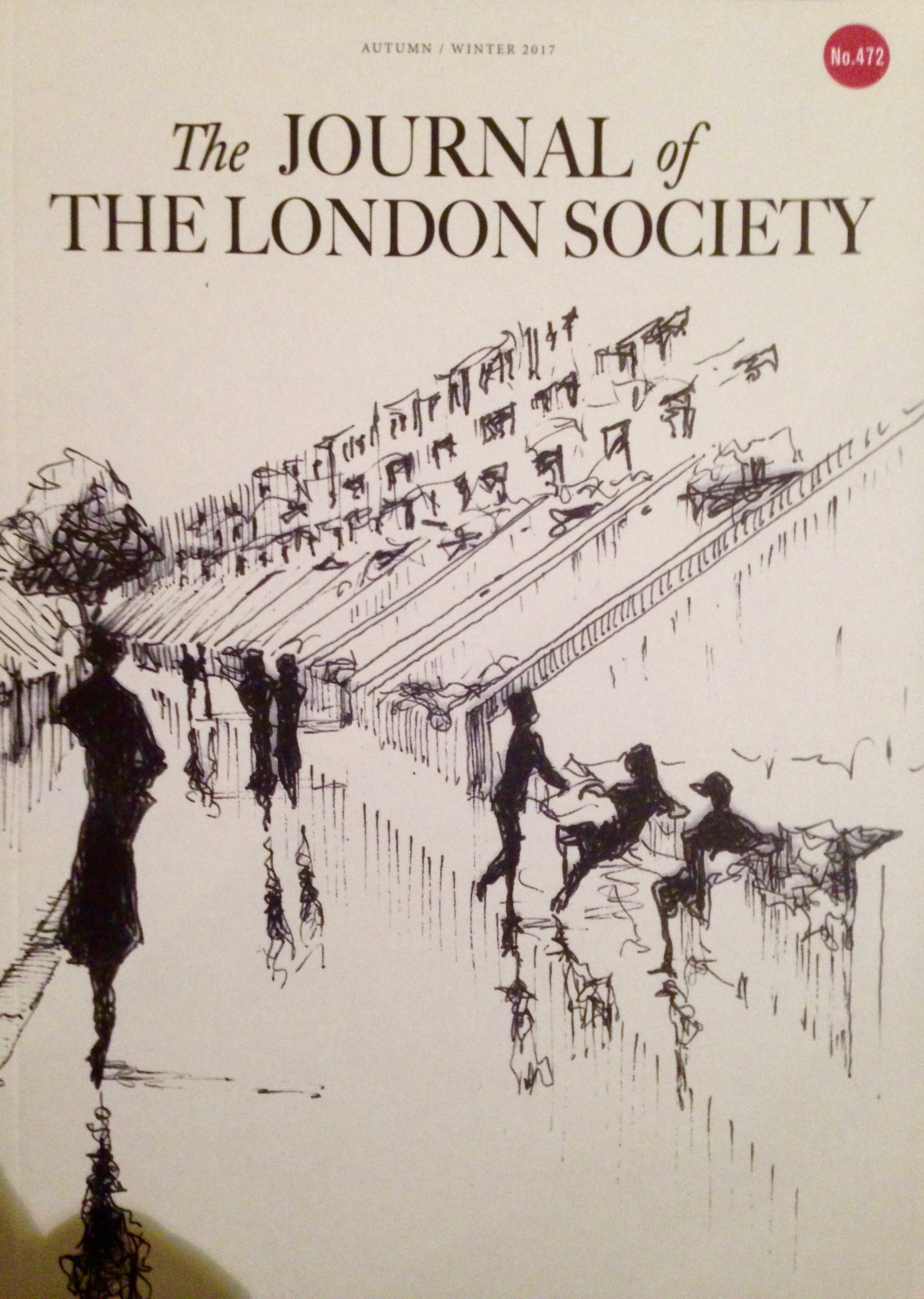Post
Journal 472 is now published
8 Jan 2018
The Autumn Winter 2017 edition of the Journal of the London Society is dropping on doormats throughout the capital, and is also available to be bought from the Society for just £7.50 (details here).
New members will receive the Journal free - you can join here.
Editor Jessica Cargill Thompson shares the delights of the new edition.
Ten million. One-zero. That's how many of us Londoners there'll be by 2030 – just 12 years' time. According to figures from the GLA and O ce of National Statistics, we currently number 8.9million, and it's predicted we'll pass the 9 million mark some time in 2019.
In relation to other world cities, London thinks of itself as a relatively small city: giant in stature but human in its physical scale. We're not the neverending urban expanses of Toyko/Yokohama (33 million); the skyscraping canyons of New York; the apartment dwellers of other European capitals; or the squeezed masses of Mumbai (density 23.9 people per sq km compared to London's 5.1), much as we may admire all of those places. We are traditionally low rise and low density, with a surprising amount of green space. We value culture as much as we value commerce, and pride ourselves on being a place of both hi-tech innovation and ancient monuments. The seemingly unstoppable rush towards 10 million understandably induces palpitations.
In this issue of the Journal we're pausing to consider what a London of 10 million would look like. What are the opportunities of growth, and what are the caveats? Can we preserve the best of what we have while still being open to innovation and change? How can London guarantee, to borrow the mayor's term, "good growth", ensuring it remains a richly mixed city before we carpet everywhere from Uxbridge to Ilford with knee-jerk high-density housing? Will it still be recognisably 'London'?
Jonathan Manns interviews in influential urban theorist Nikos Salingaros, Professor of Mathematics at the University of Texas, for a global perspective on growth and successful urban forms. Mark Prizeman looks at the exciting opportunities a city of 10 million might a afford, while Michael Patterson of London Historians revisits London's past population booms, recounting the effect on the city at the time and how they shaped the London we now love. Emily Gee of Historic England puts the case for planning London's past into its future, while Urban Planner Zoe Green argues why London must also retain its hi-tech top spot.
On the practical matter of where to physically fit everyone in, Sarah Yates explains why we need to view London as a city of many urban centres that can embrace denser, mixed-use development; John Myers of London YIMBY shows how careful in ll on a local level offers a painless way to increase densities without decreasing neighbourhood character; and Michael Bach of the London Forum stresses the need for including communities in the planning of their future, not leaving it to the policymakers and professionals.
And for some inspiration on how to do good growth well, Lettie McKie meets the pioneering women of OWCH whose cohousing offers a practical housing solution for the expanding over-50s demographic, and Mark Swenarton, author of Cook's Camden: the Making of Modern Housing, celebrates some of London's best social housing. It's unlikely you'll agree with everyone – and doubtless all London Society members will have their own views on how to accommodate the magic 10 million. But the society has always been about lively debate. Where I hope we can all concur is the need for London to plan its growth rationally and sympathetically, and for the benefit of us all.


